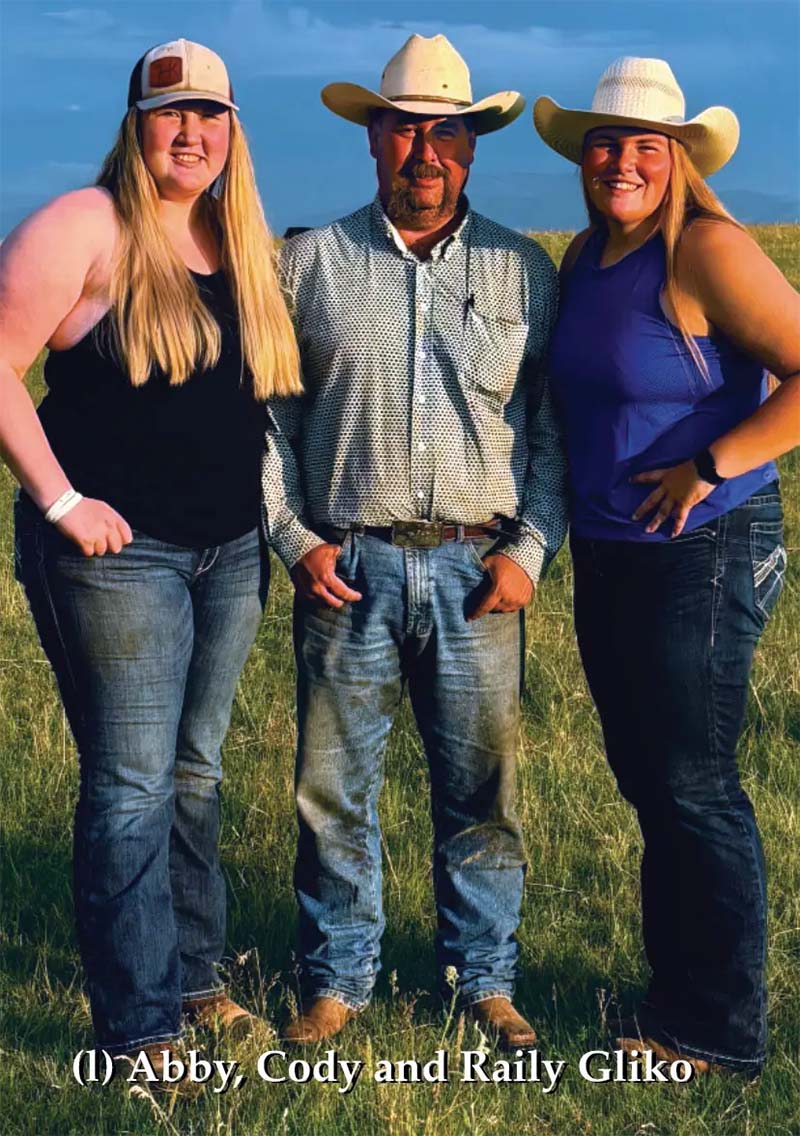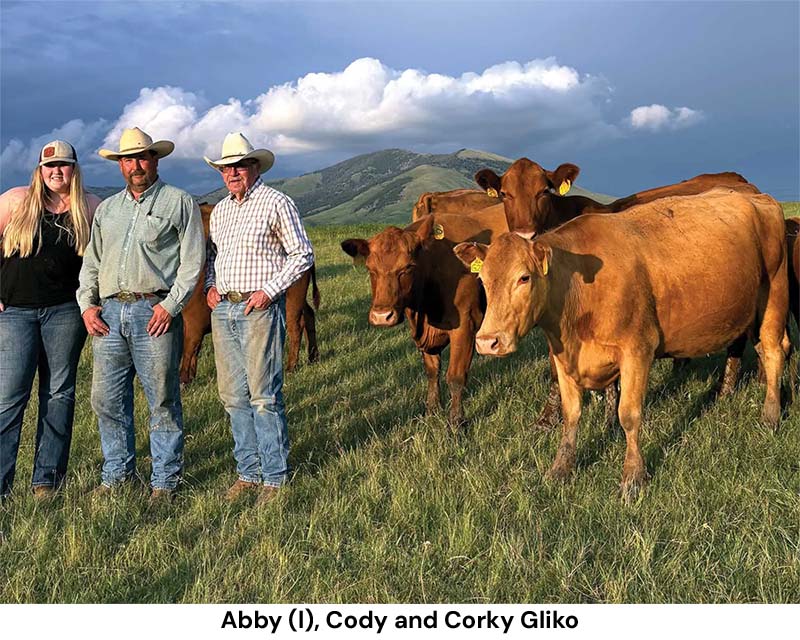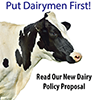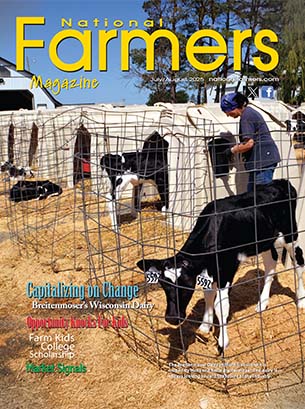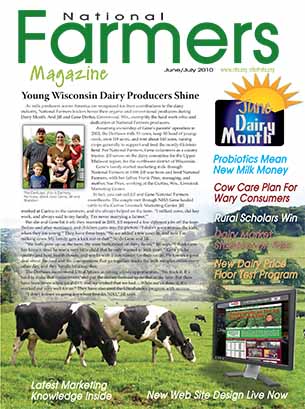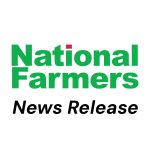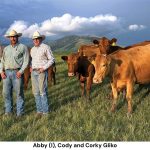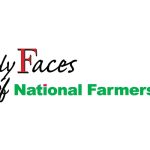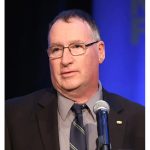Montana’s Mountain View
By Denice Rackley
Arriving on Ellis Island in 1897, John Gliko was one of more than 12 million people who passed through that gateway between 1892 and 1954, leaving behind everything they knew and carrying only dreams to guide them.
The Gliko brothers worked their way across more than 2,000 miles of unfamiliar country. Arriving in Great Falls, Montana, they took jobs at the local smelter plant. Was it the green valleys or picturesque mountains that spurred memories of their Austrian homeland, prompting them to set stakes in the small coal town of Belt? No one is quite sure. But those stakes must have been planted deep—five generations of Glikos have called the area around Belt, Montana, home.
As the family grew, land was bought and sold. Some families moved to pursue other opportunities, but Cody’s grandfather, Anthony, stuck it out. On a farm outside Belt, he began raising Herefords. That cattle legacy has continued with three more generations of Glikos living on the same piece of land.
Legacy
Each generation has left its unique stamp on the ranch. This mark is most recognizable in the color of the cattle that contentedly munch hay in sheltered winter lots and meander through fresh green mountain pastures come May.
Herefords were the original cattle of choice on the ranch due to their ability to thrive in cold, snowy Montana winters. But due to reduced moisture and the severe drought in 1985, the ranch was destocked. When grass returned in 1989, so did the cows—but this time they were Black Angus.
Angus genetics were improving, and black cattle had gained popularity. Producers raising black cattle were adding green to their pockets, not just to their pastures. The Glikos were game to give these black cattle a go. Once Cody’s dad—Corky, a nickname meaning “troublemaker”—took the reins, they began breeding the cows to red Limousin bulls.
“This cross produced some outstanding calves and replacement heifers, many of which were red,” Corky noted.
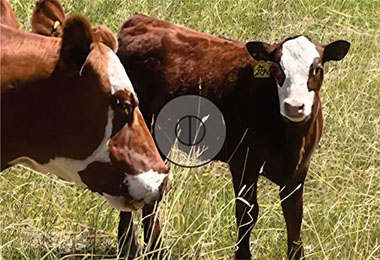
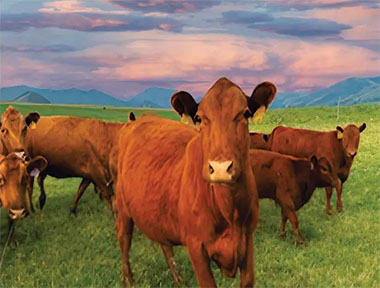
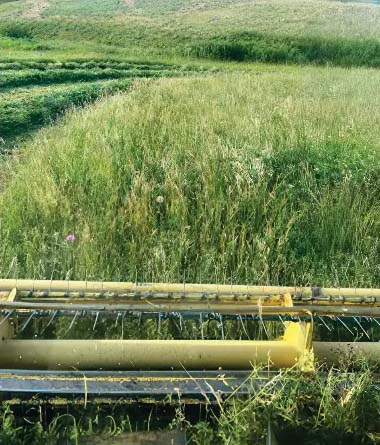
Going Red
“We enjoyed the unique herd, with everyone else around raising black cattle, so we’ve stuck with red since,” Cody said, revealing a glimpse of the Austrian stubbornness that has served the family well.
Now using registered Red Angus bulls on red and red, white-faced commercial cows, Corky and Cody couldn’t be more pleased. “We calve in lots during late winter to avoid the mud that comes with snowmelt and spring rain,” Cody explained. Preferring barn lots and frozen ground, heifers calve in mid-February, followed by the cows in March.
“We’re able to give the heifers plenty of room, time and attention before the older girls calve. This also enables those early calves to put on a few more pounds,” Cody noted.
In the mountains, May means grass. Most of the snowpack has melted, and the hard Western grass is growing by leaps and bounds. The growing season is short, so the cows must take advantage of the warm days and nutritious grasses while they last.
The pairs graze a 700-acre pasture from May until July, when they’re brought down to a leased valley with a creek that runs year-round. The cattle make a quick trip home in the fall to allow calves to be weaned and cows to be pregnancy-checked. With fall work done, most of the cows head back to pasture while the cull cows and calves remain at home.
Calves are preconditioned and provided free-choice hay and fed cake—a 16% protein pellet—once a day.
“We basically feed the calves to get them used to being around people and coming to the bunk to eat. They come home a bit jumpy from living in big pastures, but it doesn’t take long to calm down,” Cody said.
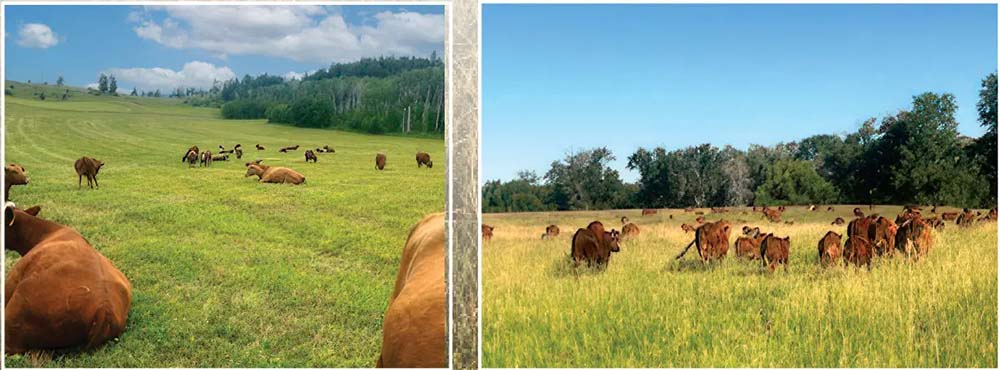
Cooperation Brings Reward
Retaining around 15 heifer calves each year for replacement, those calves are sorted from the group. Any other heifer calves Corky and Cody think will make nice replacements are sorted out and bangs vaccinated for brucellosis to be sold by video auction. The remaining calves are sold with the assistance of National Farmers.
“The cooperative marketing advantage makes a huge difference for producers with smaller herds,” Corky said.
First introduced to the National Farmers Organization by a friend, the Glikos have been shipping calves with National Farmers for nine years. But like most things out West, it’s done a bit differently. “We have three groups of ranchers that sell calves together. Each group has about 15 producers who calve around the same time,” Cody noted. More importantly, these producers raise calves cooperatively.
“Calves are raised similarly and vaccinated to meet protocols. The calves are sorted and sold in three lots according to size: small, medium and heavy. Our group sells about 2,500 calves a year this way. Most go into feedlots in Nebraska and Kansas.”
Cooperatively raising and marketing calves benefits both producers and buyers. Producers gain a higher price by combining their calves with others to fill semis. Buyers benefit by purchasing loads of calves that are not only similar in weight but also have similar histories. Talk to any cattle feeder, and they’ll tell you that knowing the health history and source of calves is a game-changer.
Anything that makes the transition to a feedlot easier—for calves and those feeding them—reaps rewards.
“We have the same buyers come back to us year after year,” Cody remarked. There are also opportunities to combine cull cows in loads that are shipped about four times a year to Idaho for slaughter.
Homeward Bound
All the bred cattle spend the fall on pasture. “We feed them hay on pasture once the grass is gone, but try to keep them out of the lots until the end of January or early February, depending on the weather.” This past winter, returning home was a bit challenging. “The snow began on Jan. 10 and kept coming.”
Winter snows are always a mixed blessing in the West—moisture is always needed, but the extra work can be tough. With four feet of snow on the ground, or more, throughout the season, those tough enough to raise livestock in the West are quickly sorted from those who aren’t. “We finally were able to trail cattle home behind the processor Feb. 10 and had two heifers calve that afternoon,” Cody recalled. “This past year we had to bucket snow out of lots just to keep the cattle from walking over the fence.”
Family, Friends and Neighbors Make It Possible
No doubt red cattle will grace the pastures of Mountain View Ranch for generations to come. Corky, Cody, and his two daughters, Abby and Raily, are committed to toughing out the winters and enjoying the summers in Belt, Montana, following in the footsteps of the first two generations of the Gliko family.
You don’t thrive in the West without family, friends and neighbors—especially when ranching is your chosen occupation. Unlike those earlier generations, the current Glikos can count on their friends at the National Farmers Organization to help market those thick-bodied red calves and bring a little jingle to their pockets, making those cold Montana winters just a touch easier to handle.
